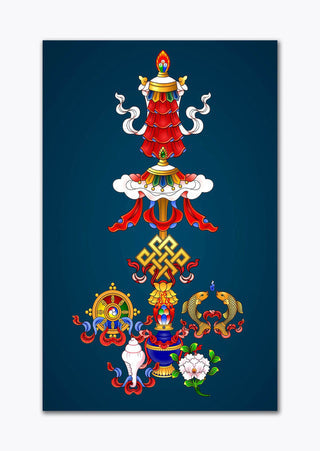Article: Bhil Artwork: A Glimpse into Indigenous Creativity and Culture

Bhil Artwork: A Glimpse into Indigenous Creativity and Culture
Bhil art, rooted in the indigenous culture of the Bhil tribe of India, is a captivating expression of their rich heritage and deep connection with nature. This tribal art form, which dates back centuries, reflects the Bhil community's spiritual beliefs, daily life, and reverence for the environment.
Historically, Bhil art has adorned the walls of tribal homes, serving as a visual narrative of their experiences, beliefs, and customs. These artworks often depict stories, rituals, and the natural world, making them not just decorative but also symbolic and meaningful.
Bhil Styles: Diverse Expressions
Bhil art encompasses a wide range of styles, each reflecting the distinct characteristics of different Bhil sub-groups and regions:
1. Pithora: Pithora paintings are one of the most renowned forms of Bhil art. They are characterized by colorful depictions of deities, animals, and daily life, often associated with rituals and ceremonies.
2. Mandana: Mandana art is known for its intricate geometric patterns and motifs, adorning the floors and walls of Bhil homes during festivals and celebrations. These designs are believed to invite prosperity and protection.
3. Gavari: Gavari paintings narrate stories related to the Gavari festival, a significant cultural event in Bhil communities. These paintings capture the essence of the festival, depicting gods, goddesses, and rituals.
Vibrant Colors and Symbolism
Bhil art employs a rich palette of natural colors derived from materials such as charcoal, turmeric, and crushed stones. Each color carries symbolic significance. For instance, red symbolizes energy, blue represents the cosmos, and yellow signifies fertility. The use of these colors and intricate detailing in Bhil art gives life to the stories it tells.
Contemporary Adaptations
While Bhil art has its origins in rural tribal communities, it has evolved and expanded its reach in contemporary times. Bhil artists now create their artwork on diverse surfaces, including canvas, paper, textiles, and even modern art forms. This expansion has brought Bhil art to a global audience, where it is appreciated for its unique style and cultural significance.
Cultural Significance and Preservation
Bhil art is not just aesthetically appealing; it is deeply rooted in the cultural fabric of the Bhil community. It serves as a visual representation of their identity, beliefs, and way of life. Efforts to preserve and promote Bhil art have gained momentum, with organizations and initiatives aimed at empowering Bhil artists and safeguarding this precious cultural heritage.
Experience the Magic of Bhil Art
Bhil art invites you to embark on a journey into the heart of indigenous India, where every stroke carries the weight of tradition and every color tells a story. It is a celebration of nature, spirituality, and the rich cultural tapestry of the Bhil tribe. Explore our exclusive Bhil art collection and let the vibrant narratives and intricate detailing add a touch of indigenous charm and cultural heritage to your life.



